In the vibrant tapestry of the rainforest, few creatures quite capture the imagination like the red-eyed tree frog (Agalychnis callidryas). With its striking appearance and fascinating behaviors, this amphibian has become an iconic symbol of tropical biodiversity. One cannot discuss red-eyed tree frogs without first acknowledging their mesmerizing appearance. These petite amphibians boast a variety of colors, including vibrant hues of green, blue, yellow, and orange. However, their namesake feature steals the spotlight – the large, conspicuous red eyes that seem to peer into the soul of the beholder. These piercing eyes serve not only as a visual spectacle but also as a clever adaptation for survival in the dense rainforest canopy.
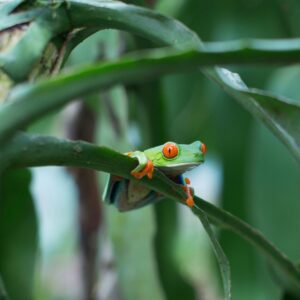
Startle Coloration
The startle coloration of red-eyed tree frogs is an exceptional adaptation that serves as a defense mechanism against potential predators. This phenomenon, also known as “flash coloration,” involves the sudden exposure of vivid colors or patterns, which startle or confuse predators, giving the prey an opportunity to escape.
Red-eyed tree frogs possess remarkable startle coloration primarily in their eyes. During the day, when they rest on leaves or branches, their eyes appear closed or hidden. However, when disturbed or threatened, they abruptly open their large, scarlet-red eyes, revealing their startling coloration. This sudden display of bright red contrasts sharply against their green bodies, creating a dramatic effect that can startle predators. The purpose of this startle coloration is multifaceted.
Firstly, the sudden change in appearance can surprise predators, momentarily deterring them from attacking or providing the frog with an opportunity to flee.
Secondly, the bright red eyes may serve as a warning signal, indicating to predators that the frog is toxic or distasteful. While red-eyed tree frogs do not produce toxins themselves, their vibrant coloration mimics that of other poisonous frogs, effectively deterring predators that have learned to associate bright colors with danger.
Additionally, the startle coloration may also serve a communicative function within the species. During aggressive encounters or territorial disputes, red-eyed tree frogs may use their bright eyes to signal dominance or intimidate rivals.
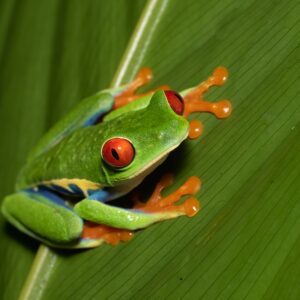
Where are they?
Red-eyed tree frogs are denizens of the lush tropical rainforests of Central America, including regions of Costa Rica, Panama, Nicaragua, and Honduras. Within these verdant realms, they primarily inhabit the canopy layer, where dense foliage and abundant moisture provide an ideal environment for their survival. These arboreal amphibians are adept climbers, utilizing specialized pads on their feet to grip onto branches and leaves with ease. Their arboreal lifestyle not only offers protection from ground-dwelling predators but also grants them access to a rich array of food sources.
Nocturnal navigators
As nocturnal creatures, red-eyed tree frogs are most active during the cover of night, when the rainforest resonates with the symphony of nocturnal life. Under the cloak of darkness, they emerge from their daytime hideouts to forage for insects, their primary source of sustenance. With lightning speed, they snatch prey with their long, sticky tongues, demonstrating remarkable precision and agility. However during the day, red-eyed tree frogs seek refuge in the foliage, where their cryptic coloration helps them blend seamlessly with their surroundings.
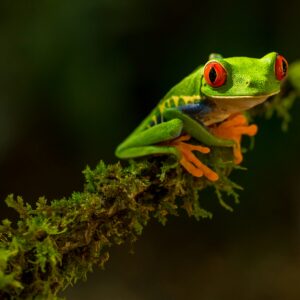
Conservation
Despite their enchanting allure, red-eyed tree frogs face numerous threats in their native habitat. Habitat destruction, primarily due to deforestation and urbanization, poses a significant risk to their survival. Additionally, pollution, climate change, and the spread of infectious diseases further compound these challenges. Efforts to conserve red-eyed tree frogs and their fragile ecosystems are underway, with organizations and conservationists working tirelessly to protect their habitats and raise awareness about the importance of biodiversity conservation. Through education, research, and habitat restoration initiatives, we can ensure that future generations have the opportunity to marvel at these captivating creatures in the wild.
Wrapping it up
These frogs are not merely inhabitants of the rainforest; they are an emblem of the wondrous diversity and intricate beauty of the natural world. Through their striking appearance, fascinating behaviors, and remarkable adaptations, they serve as a reminder of the interconnectedness of all living things and the importance of preserving our planet’s precious ecosystems. Let us cherish and protect these enigmatic amphibians, ensuring that they continue to grace the canopy of the rainforest for generations to come.
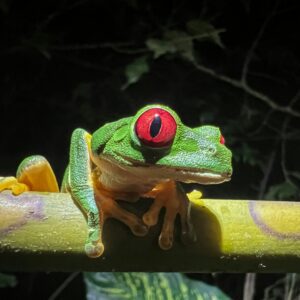

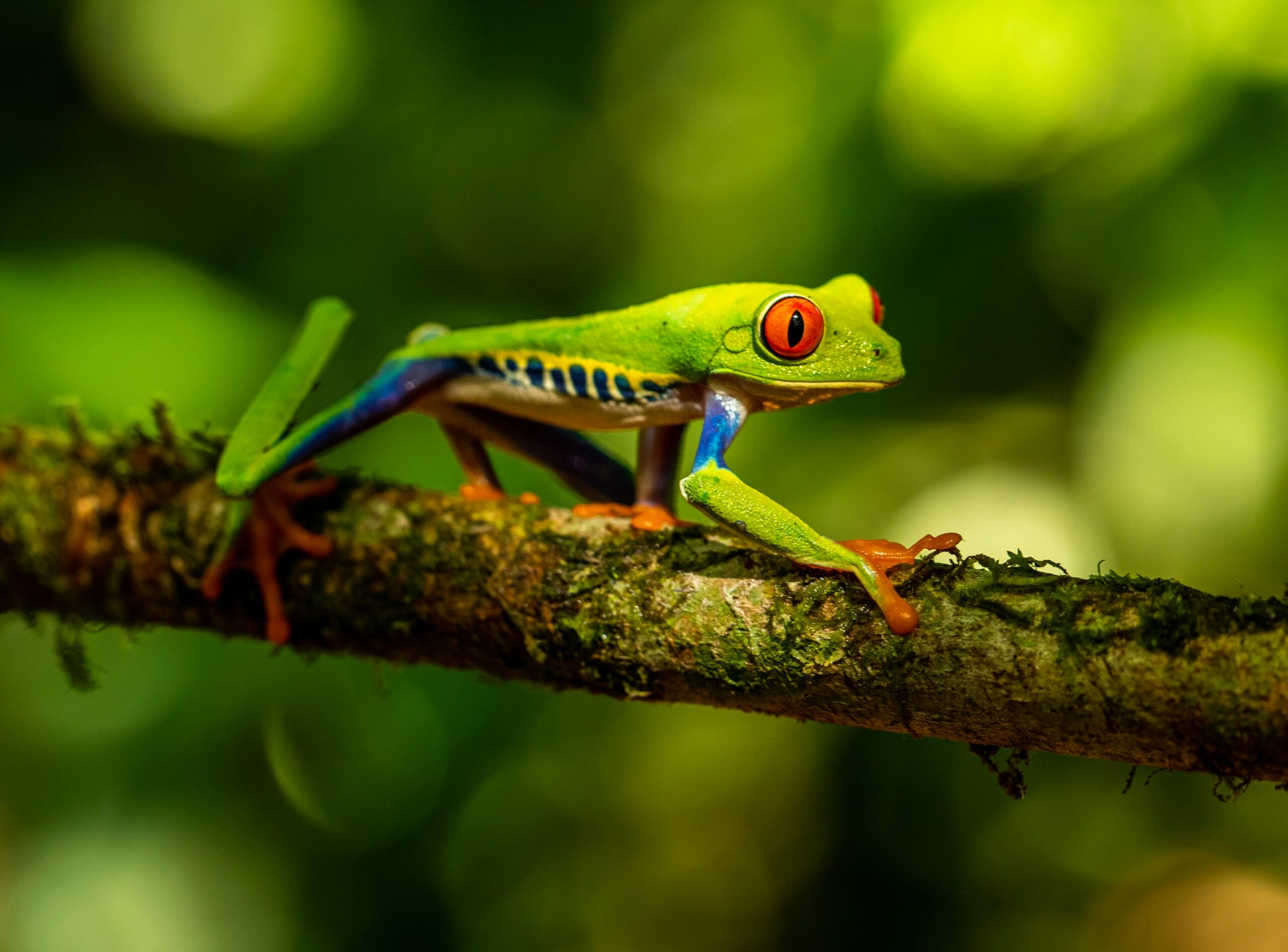
0 Comments